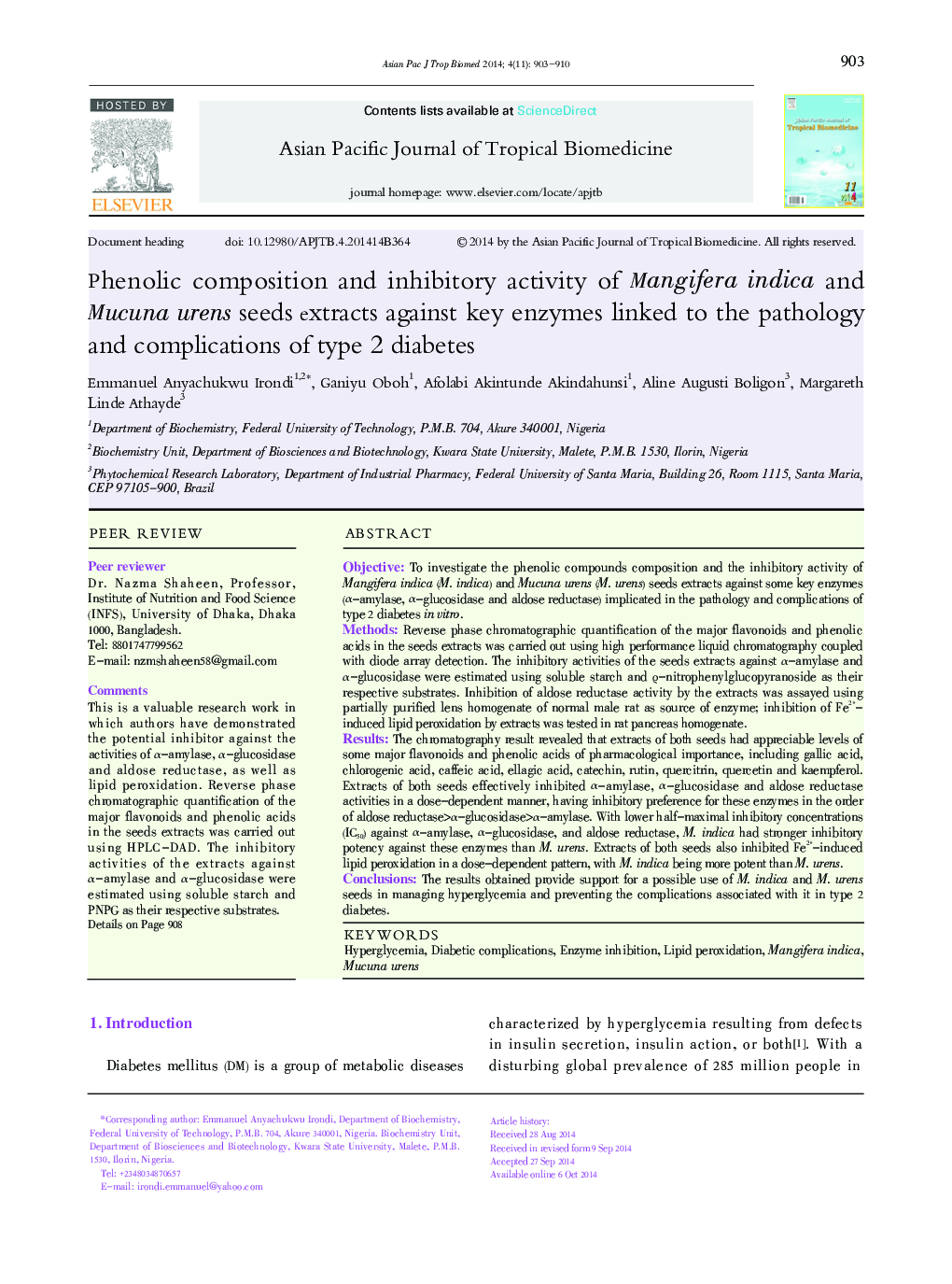| Article ID | Journal | Published Year | Pages | File Type |
|---|---|---|---|---|
| 2032689 | Asian Pacific Journal of Tropical Biomedicine | 2014 | 8 Pages |
ABSTRACTObjectiveTo investigate the phenolic compounds composition and the inhibitory activity of Mangifera indica (M. indica) and Mucuna urens (M. urens) seeds extracts against some key enzymes (α-amylase, α-glucosidase and aldose reductase) implicated in the pathology and complications of type 2 diabetes in vitro.MethodsReverse phase chromatographic quantification of the major flavonoids and phenolic acids in the seeds extracts was carried out using high performance liquid chromatography coupled with diode array detection. The inhibitory activities of the seeds extracts against α-amylase and α-glucosidase were estimated using soluble starch and ρ-nitrophenylglucopyranoside as their respective substrates. Inhibition of aldose reductase activity by the extracts was assayed using partially purified lens homogenate of normal male rat as source of enzyme; inhibition of Fe2+-induced lipid peroxidation by extracts was tested in rat pancreas homogenate.ResultsThe chromatography result revealed that extracts of both seeds had appreciable levels of some major flavonoids and phenolic acids of pharmacological importance, including gallic acid, chlorogenic acid, caffeic acid, ellagic acid, catechin, rutin, quercitrin, quercetin and kaempferol. Extracts of both seeds effectively inhibited α-amylase, α-glucosidase and aldose reductase activities in a dose-dependent manner, having inhibitory preference for these enzymes in the order of aldose reductase>α-glucosidase>α-amylase. With lower half-maximal inhibitory concentrations (IC50) against α-amylase, α-glucosidase, and aldose reductase, M. indica had stronger inhibitory potency against these enzymes than M. urens. Extracts of both seeds also inhibited Fe2+-induced lipid peroxidation in a dose-dependent pattern, with M. indica being more potent than M. urens.ConclusionsThe results obtained provide support for a possible use of M. indica and M. urens seeds in managing hyperglycemia and preventing the complications associated with it in type 2 diabetes.
